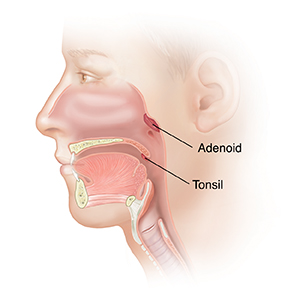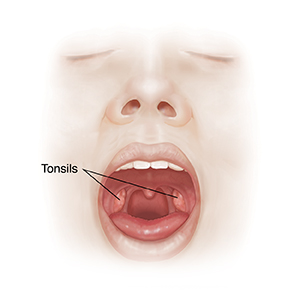Understanding Tonsillectomy and Adenoidectomy
Tonsils and adenoids are clusters of lymph tissues in the back of the throat. These tissues form part of the body’s immune system, which helps the body fight disease. If these structures often become infected or become enlarged, it can lead to problems. They may then need to be removed with surgery. Surgery to take out the tonsils is called tonsillectomy. In some cases, the adenoids are also taken out. This is called adenoidectomy.


Why tonsillectomy and adenoidectomy are done
You may have your tonsils, adenoids, or both removed for reasons such as:
-
Infection of the tonsils (tonsillitis) that keeps coming back
-
Repeated infections of the throat
-
Enlargement of the tonsils or adenoids that affects breathing during sleep—this causes a condition called obstructive sleep apnea
-
Suspected cancer of the throat
Tonsillectomy can remove part or all of the tonsils.
How tonsillectomy and adenoidectomy are done
This surgery is done in a hospital or surgery center. It often takes less than an hour.
-
An intravenous (IV) line is put into a vein in your arm or hand. This gives you fluids and medicines.
-
You are given general anesthesia to put you into a deep sleep during the procedure.
-
A special device is used to hold your mouth open. A tube is put down into your throat to help keep your airway open during the procedure.
-
The healthcare provider uses surgical tools to take out the tonsils and possibly the adenoids.
-
The healthcare provider removes all the tools.
-
After you are awake and recovered from the anesthesia, you are sent home.
Risks of tonsillectomy and adenoidectomy
Risks include:
-
Bleeding
-
Electric burns of the mouth and lip
-
Infection
-
Injury to the lips or teeth
-
Numbness of the tongue
-
Nausea and vomiting
-
Risks of anesthesia
-
The need for a second surgery
-
Voice changes